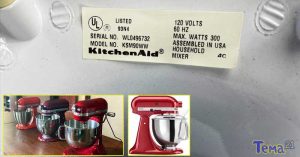Decoding KitchenAid Mixer Mysteries: Model Numbers, Serial Numbers, and More! The Ultimate Guide to Understanding the Secrets: Unlocking Model Numbers, Serial Numbers, and Their Significance
KitchenAid mixers have become an essential and versatile appliance in many kitchens worldwide, owing to their reliability, performance, and durability. This comprehensive guide aims to provide a clear, practical, and orderly explanation of KitchenAid mixer model numbers, helping readers identify and understand their mixer’s features and history. Throughout the article, we will utilize tables, images, and expert advice to assist you in making sense of the various KitchenAid mixer models and their corresponding model numbers.
Decoding KitchenAid Mixer Model Numbers
KitchenAid mixer model numbers can seem puzzling initially, but understanding their structure will help you gain valuable insights into your appliance’s features. Generally, these model numbers are composed of different components that indicate the type of mixer, bowl size, and color. In this section, we will explain the general structure of KitchenAid mixer model numbers and their components. Furthermore, we will provide: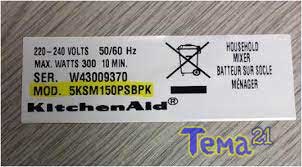
- A table showcasing common model number prefixes and their meanings
- Examples of model numbers
- A subsection on variations and exceptions
Table 1: Common KitchenAid Mixer Model Number Prefixes and Their Meanings
| Prefix | Meaning |
|---|---|
| KSM | KitchenAid Stand Mixer (e.g., Artisan Series) |
| K | KitchenAid Classic Series |
| KHM | KitchenAid Hand Mixer |
Understanding Model Numbers
Let’s examine a few examples to understand KitchenAid mixer model numbers better. Take the model number KSM150PSER, for instance:
- The prefix KSM indicates that it is a KitchenAid Stand Mixer, specifically from the Artisan Series.
- The number 150 reveals the mixer’s bowl size, which is 5 quarts.
- The suffix PSER represents the color of the mixer, Empire Red.
Another example is the model number K45SSOB:
- The prefix K denotes that it is a KitchenAid Classic Series mixer.
- The number 45 signifies that the mixer has a 4.5-quart bowl.
- The suffix SSOB indicates that the mixer is Onyx Black.
Variations and Exceptions
While the above examples provide a general understanding of KitchenAid mixer model numbers, it’s essential to be aware of variations and exceptions. Occasionally, extra numbers or letters may be added to model numbers for differentiation purposes, such as including a „W“ for white or an additional number for an updated model version. These variations may sometimes follow a relaxed pattern, so it’s essential to consult the manufacturer’s documentation or website for specific details on your mixer’s model number.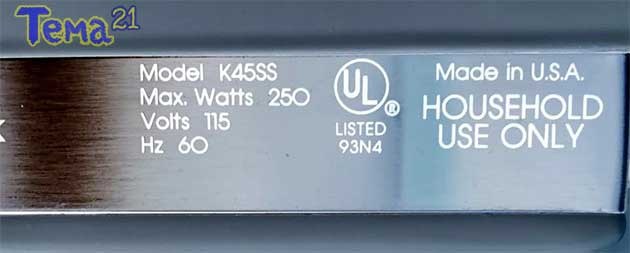
In the next section, we will delve deeper into the different types of KitchenAid mixers and their corresponding model numbers.
Decoding KitchenAid Mixer Serial Numbers
In addition to model numbers, KitchenAid mixers also have serial numbers that serve a unique purpose. Serial numbers are crucial for identifying specific appliances, as they differentiate one unit from another, even within the same model. Furthermore, serial numbers hold valuable information about the appliance’s manufacturing details. In this section, we will discuss the structure of KitchenAid mixer serial numbers, provide a table with letter codes for years and their corresponding numerical values, and offer examples of serial numbers and their decoded meanings. Finally, we will highlight the importance of knowing your mixer’s serial number for repairs, warranty, and other purposes.
Serial Number Structure
The structure of KitchenAid mixer serial numbers primarily consists of a series of letters and numbers. The first four digits hold the most crucial information, revealing the factory code and the manufacturing date. The first digit represents the factory code, while the second, third, and fourth digits signify the manufacturing year, week, and day, respectively.
Table 2: KitchenAid Mixer Serial Number Year Codes
| Letter | Year | Letter | Year | Letter | Year |
|---|---|---|---|---|---|
| J | 1999 | K | 2000 | L | 2001 |
| M | 2002 | N | 2003 | P | 2004 |
| Q | 2005 | R | 2006 | S | 2007 |
| T | 2008 | U | 2009 | W | 2010 |
| X | 2011 | Y | 2012 | Z | 2013 |
| A | 2014 | B | 2015 | C | 2016 |
| D | 2017 | E | 2018 | F | 2019 |
| G | 2020 | H | 2021 |
Serial Number Examples
Let’s decode the serial number W1KU123456:
- The first digit, W, indicates that the mixer was manufactured in 2010.
- The second digit, 1, denotes that the mixer was produced in the year’s first week.
- The third and fourth digits, KU, signify that the mixer was made on a Thursday.
- The remaining digits, 123456, serve as the unique identifier for this specific unit.
Another example is the serial number F3PW987654: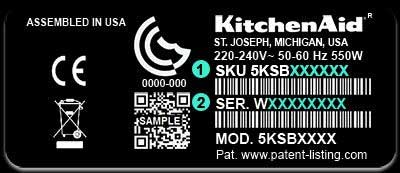
- The first digit, F, represents that the mixer was manufactured in 2019.
- The second digit, 3, reveals that the mixer was produced in the third week of the year.
- The third and fourth digits, PW, indicate that the mixer was made on a Wednesday.
- The remaining digits, 987654, serve as the unique identifier for this specific unit.
The Importance of Serial Numbers
Knowing your KitchenAid mixer’s serial number is vital for various reasons. Serial numbers are often required when seeking repairs or submitting warranty claims, as they help service centers, and manufacturers verify the appliance’s authenticity and eligibility for coverage. Furthermore, serial numbers can provide essential information about the mixer’s manufacturing date, which may be relevant for troubleshooting or obtaining replacement parts. By understanding your mixer’s serial number, you can ensure you receive the appropriate assistance and support for your appliance.
How to Find KitchenAid Mixer Model and Serial Numbers
Knowing your KitchenAid mixer’s model and serial numbers is crucial for obtaining accurate information about your appliance’s features, history, and manufacturing details. This section will provide step-by-step instructions for locating the model and serial numbers on older and newer KitchenAid mixer models. We will also offer tips for safely tilting and resting the mixer to access the numbers. Images of mixers with arrows pointing to the sticker location will be included for easy reference.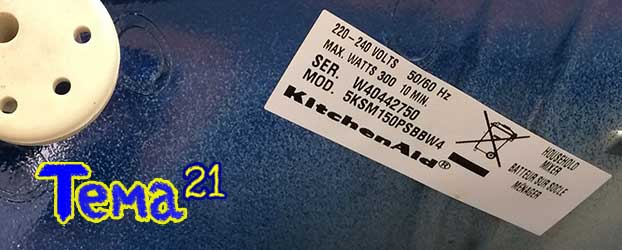
Locating Model and Serial Numbers on KitchenAid Mixers
- Disconnect the mixer from the power source: Before searching for the model and serial numbers, ensure your mixer is unplugged to prevent any accidents or damage to the appliance.
- Tilt the mixer head: Carefully tilt the mixer head back to reveal the underside. For bowl-lift models, lower the bowl before attempting to tilt the head.
- Identify the sticker: Look for a sticker on the underside of the mixer head or the lower part of the base, depending on the model. The sticker typically contains both the model and serial numbers. The sticker might be on the back or bottom of the ground on older mixers.
- Note the numbers: Write the model and serial numbers on the sticker. The model number usually begins with a letter (e.g., KSM, K, KHM), while the serial number combines letters and numbers.
- Rest the mixer head: Once you have recorded the model and serial numbers, gently return the head to its original position.
Tips for Safely Tilting and Resting the Mixer
- When tilting the head, the mixer is placed on a stable, flat surface.
- For tilting-head models, hold the mixer head with one hand while using the other to secure the mixer’s base.
- For bowl-lift models, ensure the bowl is in its lowest position before tilting the mixer head.
- Be cautious when returning the mixer head to its original position to avoid damaging the appliance or injuring yourself.
In summary, locating your KitchenAid mixer‘s model and serial numbers is a simple process that involves unplugging the appliance, tilting the mixer head, and identifying the sticker containing the numbers. By following these steps and practicing safe handling, you can quickly and easily find the information needed to understand your mixer’s features, history, and manufacturing details.
Vintage KitchenAid Mixers and Their Model Numbers
Vintage KitchenAid mixers hold a special place in the hearts of many home bakers and collectors. These classic appliances, often made by Hobart, were built to last and have a unique charm that many modern mixers can’t match. In this section, we will explore the history of vintage KitchenAid mixers, differences in model numbers and serial numbers compared to newer models, and tips for identifying, dating, and caring for these timeless treasures.
A Brief History of Vintage KitchenAid Mixers
The history of KitchenAid mixers can be traced back to the early 1900s, when the first stand mixer, known as the „H-5,“ was introduced by the Hobart Manufacturing Company. These early mixers were primarily used in commercial settings, but in 1919, the first KitchenAid home mixer was introduced. The iconic Model „K“ was later launched in 1937 and became the foundation for the brand’s enduring success.
Differences in Model Numbers and Serial Numbers for Vintage Mixers
Vintage KitchenAid mixers, particularly Hobart ones, often have different model number structures and serial number formats than modern mixers. Instead of the alphanumeric prefixes (e.g., KSM, K, KHM) used in newer models, vintage mixers may use a letter or a number to denote the model.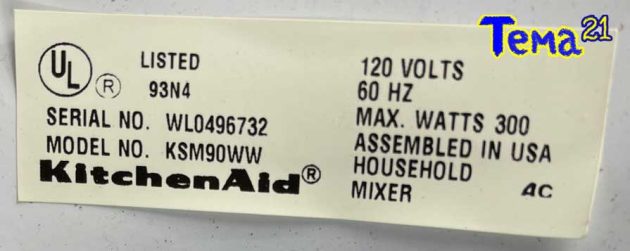
Serial numbers on vintage mixers can also be different, with some using a combination of letters and numbers to indicate the manufacturing date and factory code. Understanding these unique formats is essential for accurately identifying and dating vintage mixers.
Tips for Identifying and Dating Vintage KitchenAid Mixers
- Model number lookup: Use online resources like KitchenAid’s official website or enthusiast forums to research vintage model numbers and identify specific mixer models.
- Serial number age charts: Consult age charts or serial number databases to decode your vintage mixer’s manufacturing date and factory code. Remember that some serial numbers may be difficult to decipher due to worn or faded stickers.
- Physical characteristics: Examine your mixer for unique design features, logos, or branding that may provide clues about its age and origin. For instance, mixers made by Hobart often have the Hobart logo or nameplate on the base or the side of the mixer.
Caring for and Maintaining Vintage Mixers
- Cleaning: Gently clean your vintage mixer with a soft cloth and mild detergent. Avoid harsh chemicals or abrasive materials that could damage the mixer’s finish.
- Lubrication: Regularly lubricate the gears and motor of your vintage mixer to ensure smooth operation and prolong its lifespan. Consult the mixer’s manual or seek professional guidance for proper lubrication techniques and recommended grease products.
- Repairs: For necessary maintenance, seek a qualified technician with experience working on vintage appliances. It will help ensure the proper restoration and preservation of your mixer.
Finding Compatible Attachments and Replacement Parts
Although many vintage KitchenAid mixers are compatible with modern attachments and replacement parts, some older models may require specific components. When searching for attachments or parts, consult your mixer’s manual, check compatibility charts, or contact KitchenAid’s customer service for guidance.
In conclusion, vintage KitchenAid mixers are a testament to the brand’s enduring quality and craftsmanship. By understanding these timeless appliances’ unique models and serial numbers, you can accurately identify, date, and care for your vintage mixer, ensuring it remains a cherished kitchen companion for years.
Comparing KitchenAid Mixer Models by Year and Features
Selecting the perfect KitchenAid mixer can be challenging, given the myriad of models available, each with its unique features and specifications. This section will provide a comparison table showcasing popular KitchenAid mixer models and their key features. We will also offer tips for choosing a suitable mixer based on individual needs, preferences, and budget.
- Model: K45SS
- Release Year: 1962
- Key Features: Classic design, 10-speed control, versatile attachments
- Bowl Size: 4.5 qt
- Motor Power: 250 W
- Model: KSM90
- Release Year: 1994
- Key Features: Tilt-head design, 10-speed control, soft start feature
- Bowl Size: 4.5 qt
- Motor Power: 275 W
- Model: K5SS
- Release Year: 1978
- Key Features: Bowl-lift design, 10-speed control, heavy-duty motor
- Bowl Size: 5 qt
- Motor Power: 325 W
- Model: KV25G0XSL
- Release Year: 2006
- Key Features: Professional design, bowl-lift mechanism, all-metal construction
- Bowl Size: 5 qt
- Motor Power: 450 W
Tips for Choosing the Right KitchenAid Mixer Model
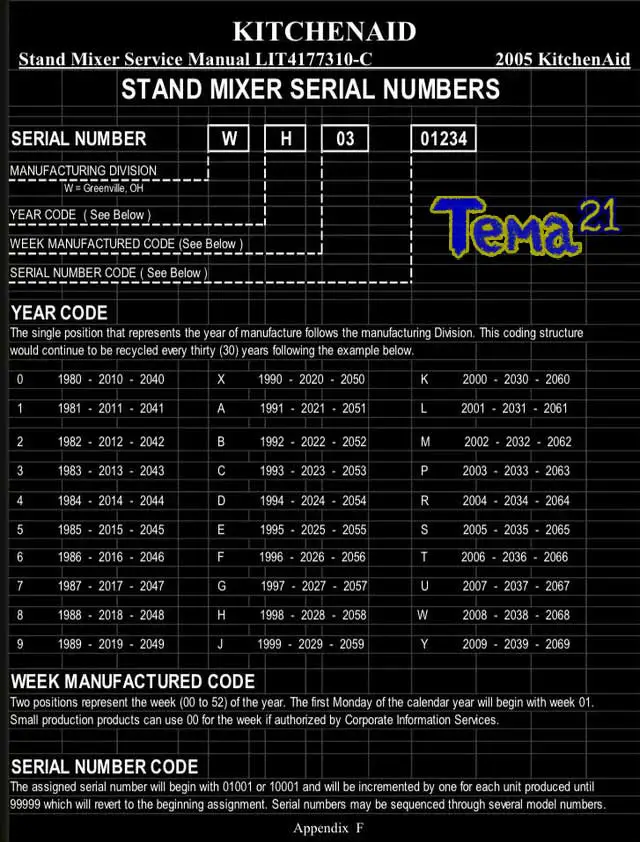
- Determine your needs: Assess your baking and cooking habits to understand your requirements better. If you frequently make large batches of dough, a mixer with a larger bowl and a powerful motor will be more suitable. On the other hand, if you mainly use a mixer for whipping cream or making small batches of cookies, a smaller mixer with a less powerful motor might suffice.
- Consider your budget: KitchenAid mixers can range in price from around $200 to over $600. Determine your budget and look for a mixer model with the best features, performance, and affordability balance within that range.
- Think about counter space: Be mindful of the area on your kitchen counter. Some KitchenAid mixer models, such as those with a bowl-lift design, can be tall and may not fit under standard cabinets.
- Check for compatible attachments: If you plan to use your mixer for various tasks, make sure the model you choose is consistent with the attachments you intend to use, such as pasta rollers, meat grinders, or spiralizers.
Differences in Bowl Sizes, Motor Power, and Other Features Among Various Models
Different KitchenAid mixer models offer varying bowl sizes, motor power, and other features, catering to a wide range of needs and preferences. For instance, some models come with a tilt-head design, allowing easy access to the bowl and beater, while others have a bowl-lift design that provides increased stability during heavy-duty mixing tasks.
Bowl sizes can range from 3.5 quarts in mini mixers to 7 quarts in professional models, and motor power can vary from 250 watts in entry-level mixers to over 500 watts in high-performance models.
Some mixers include additional features, such as soft start, which gradually increases the speed to prevent ingredients from splattering, or electronic speed sensors that maintain consistent mixing speeds under different loads.
By comparing various KitchenAid mixer models based on their features, bowl sizes, and motor power, you can make an informed decision when selecting the perfect mixer for your kitchen.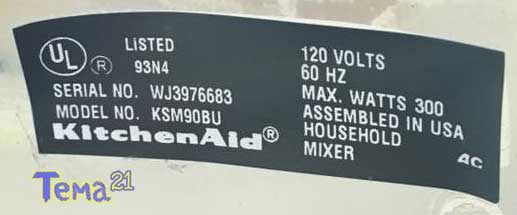
In Conclusion
Understanding your KitchenAid mixer’s model and serial numbers is crucial for identification, repairs, and making well-informed decisions. Being familiar with these details allows you to choose the right attachments and replacement parts and troubleshoot any issues that may arise during the mixer’s lifetime. Additionally, it enables you to appreciate the history and evolution of KitchenAid mixers, helping you select the perfect model that caters to your individual needs and preferences.
We encourage you to keep a record of your mixer’s model and serial numbers for future reference, as it will save you time and effort in the long run. Moreover, we invite you to join the conversation and share your experiences or ask questions about KitchenAid mixers in the comments below. Let’s celebrate the joy of cooking and baking with these iconic and versatile appliances.

Марта Савова е журналист и писател, специализиран в областите здравеопазване, технологии и наука. С над 20-годишен опит в сферата, тя е публикувала множество изследователски статии и има страст към споделянето на знания. Марта е редовен сътрудник на различни медии.
